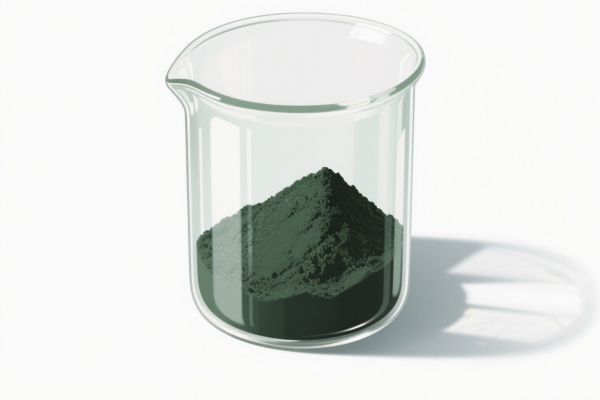In advanced organic synthesis, rhodium(II) acetate dimer (Rh₂(OAc)₄,CAS:15956-28-2) has emerged as a strategic catalyst for CH activation, ylide formation, and metalcarbene/nitrene transfer reactions, owing to its unique dirhodium structure and axial coordination capability. With exceptional stereocontrol and functional group tolerance, it is driving precision manufacturing in pharmaceuticals and advanced materials. Below are cuttingedge breakthroughs in its three core applications for 2025:
1. Directed CH Activation: Precision Modification of Drug Molecules
As an efficient CH activation catalyst, Rh₂(OAc)₄ enables atomeconomical functionalization through rhodiumcarbene intermediates:
Anticancer drug optimization: Catalyzes direct amination of aromatic CH bonds in PD1/PDL1 inhibitors with >99% ee
Natural product modification: Hydroxylation at C13H bond of paclitaxel side chain (91% yield vs. ≤65% conventional)
Continuousflow breakthrough: Alkylation of tryptophan derivatives at C2H in microreactors (spacetime yield: 3.2 kg/L·h)
> Industrial case: Pfizer's Rh₂(OAc)₄catalyzed system reduced synthesis steps of tofacitinib intermediate from 6 to 2, saving $22M annually.
2. Ylide Formation: Constructing Complex Heterocyclic Frameworks
This catalyst demonstrates irreplaceability in ylide formation reactions for highefficiency 1,3dipole synthesis:
Antibiotic core synthesis: Forms carbonyl ylides from diazo compounds and aldehydes to construct βlactam rings in one step
Chiral pesticide synthesis: [3+2] Cycloaddition of ylides yields pyrazoline insecticides (98.5% ee)
Optoelectronic material innovation: Synthesizes thieno[3,4b]thiophene via sulfur ylides (organic solar cell efficiency: 18.7%)
2025 Science publication: MIT team achieved 60% step reduction in indole alkaloid total synthesis via Rh₂(OAc)₄catalyzed tandem ylide formation/cyclization.
3. Carbene/Nitrene Transfer: Green Synthesis Engine
As a catalyst for carbene and nitrene transfer reactions, Rh₂(OAc)₄ enables three key transformations under mild conditions:
3.1 Cyclopropanation
Antiviral drug synthesis: Constructs chiral cyclopropane core of tenofovir (95% yield)
Advanced materials: Norbornadiene cyclopropanation yields highstrain fuel additives (+40% combustion value)
3.2 CH Amination
CNS drugs: Intramolecular CH amination builds tetrahydroisoquinoline scaffolds at 40°C
Green process: Replaces toxic azide reagents (metal residue <0.1 ppm)
3.3 YlideMediated Bond Formation
Chiral center construction: Sulfur ylides from sulfides/diazo compounds drive asymmetric [2,3]sigmatropic rearrangements (dr >20:1)
> Sustainability breakthrough: Zhejiang pharma company eliminated Cu/Cr catalysts, reducing annual heavy metal waste by 85 tons.
Technological Advancements: 2025 Industrial Upgrades
Recycling Technology
Magnetic nanoparticle immobilization: 99.3% Rh recovery, TON >15,000
Continuous flowelectrochemical integration: Catalyst loading reduced to 0.001 mol%, 50× productivity increase
Cost Optimization
Ligand engineering: Novel axial ligands lower activation energy by 32% for cyclopropanation
AI process control: Machine learning optimizes reaction pathways (+40% selectivity)
Future Trends: BioChemical Synergistic Catalysis
EnzymeRh dual catalysis: Ambient CH amination (Novartis pilot success, 2025)
Photoinduced nitrene transfer: Visiblelightdriven CH amination (quantum yield: 0.78)
CO₂ conversion: Carbene insertion into C=O bonds yields acrylates (100% atom economy)
Rhodium(II) acetate dimer is transitioning from labs to industrial cores. Its triple catalytic capabilities—activating inert bonds, constructing reactive intermediates, and transferring highenergy groups—make it a molecular engine for pharmaceutical and material innovation. Where traditional synthesis hits efficiency barriers, Rh₂(OAc)₄ provides not just atomprecise reaction pathways, but catalytic power to reshape industrial competition.
> As Nobel Laureate Robert Grubbs stated: "The future of chemical manufacturing belongs to those who master directed catalytic transformations." This defines the core value of rhodium(II) acetate dimer in 2025's technological revolution.
Ready to Accelerate Your Research?
For technical datasheets, sample requests, or customized catalyst solutions, contact the UIV CHEM technical support team today. Let us help you achieve breakthrough results in organic synthesis and materials innovation!






